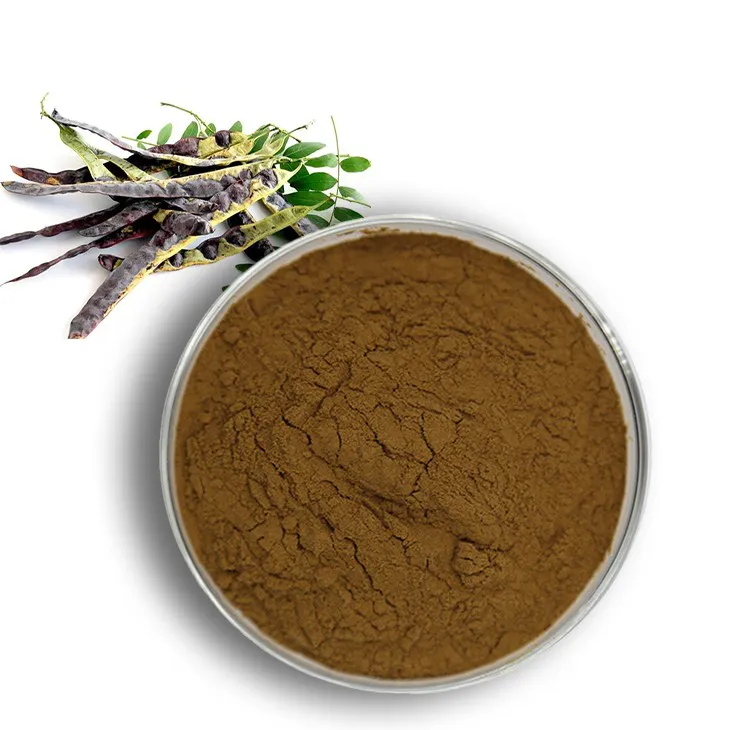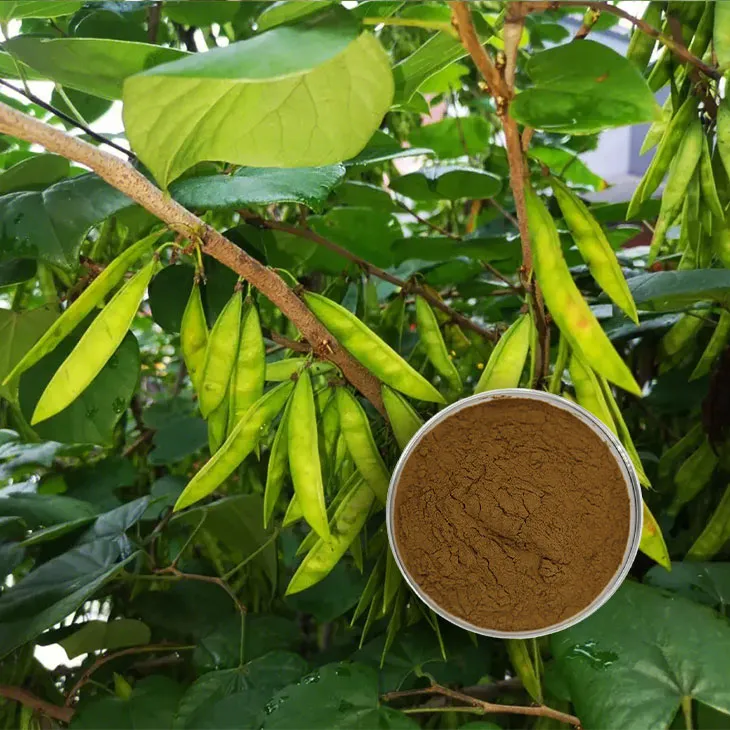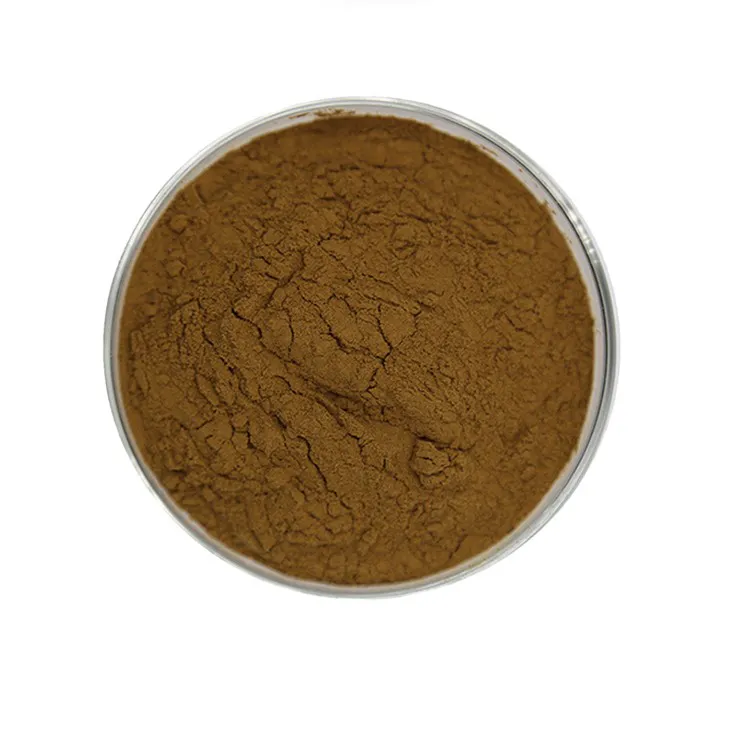- 0086-571-85302990
- sales@greenskybio.com
Overcoming Obstacles: The Challenges of Saponin Extraction from Plant Sources
2024-08-22

Introduction
Saponins are a diverse group of natural compounds found in various plant sources. They have attracted significant attention due to their wide range of biological activities and potential applications in pharmaceuticals, cosmetics, and food industries. However, the extraction of saponins from plant sources poses several challenges that need to be addressed for efficient and reliable production. This article aims to provide a comprehensive exploration of these obstacles and solutions in Saponin Extraction.

The Importance of Saponin Extraction
Saponins possess various pharmacological properties such as anti-inflammatory, antioxidant, and antimicrobial activities. They are also used as emulsifying agents, foaming agents, and detergents in different industries. The extraction of saponins from plant sources allows for the isolation and purification of these compounds, enabling their utilization in research and commercial applications.

Challenges in Saponin Extraction
Plant Variability
Plants exhibit significant variability in their chemical composition, including saponin content. Different plant species, varieties, and even individual plants within a species can have varying levels of saponins. This variability makes it difficult to establish standardized extraction protocols and predict the yield and quality of saponins in different plant materials. For example, some plant species may have higher saponin content in their leaves, while others may have it in their roots or stems.
Extraction Techniques
Selecting an appropriate extraction technique is crucial for obtaining high-quality saponins. Traditional extraction methods such as solvent extraction, maceration, and reflux extraction have been widely used, but they often suffer from limitations such as low extraction efficiency, long extraction times, and the use of large amounts of organic solvents. Moreover, these methods may not be suitable for extracting saponins from heat-sensitive plants or those with complex chemical structures.
Contamination and Impurities
During the extraction process, there is a risk of contamination with other compounds or impurities, which can affect the purity and quality of the extracted saponins. For instance, plant materials may contain polysaccharides, proteins, and other secondary metabolites that can co-extract with saponins and require additional purification steps. Removing these contaminants without significant loss of saponins is a challenging task that requires careful optimization of the extraction and purification processes.
Scale-up and Industrial Applications
Scaling up the saponin extraction process from laboratory to industrial levels presents several challenges. Large-scale extraction requires efficient equipment and processes to handle large volumes of plant materials and solvents. Ensuring consistent quality and yield across different batches and production runs is also a critical issue in industrial applications.

Solutions to Saponin Extraction Challenges
Plant Material Selection and Characterization
Thoroughly selecting and characterizing plant materials based on their saponin content and chemical composition is the first step in overcoming the challenge of plant variability. This can be achieved through various techniques such as high-performance liquid chromatography (HPLC), mass spectrometry (MS), and spectroscopic methods. By identifying plant species or varieties with high saponin content and favorable chemical profiles, extraction protocols can be tailored accordingly to maximize the yield and quality of saponins.
Optimization of Extraction Techniques
Developing and optimizing novel extraction techniques can significantly improve the efficiency and yield of saponin extraction. For example, ultrasound-assisted extraction (UAE), microwave-assisted extraction (MAE), and supercritical fluid extraction (SFE) are emerging techniques that offer several advantages over traditional methods. UAE utilizes ultrasound waves to enhance mass transfer and improve extraction kinetics, while MAE uses microwave energy to heat the plant materials rapidly and efficiently. SFE employs supercritical fluids such as carbon dioxide as the extraction solvent, which has low toxicity and can be easily separated from the extracted saponins.
Purification and Fractionation
Purification and fractionation steps are essential to remove contaminants and obtain pure saponin fractions. Various purification techniques such as column chromatography, membrane filtration, and precipitation can be employed depending on the nature of the contaminants and saponins. For instance, column chromatography using silica gel or other suitable stationary phases can separate saponins based on their polarity and molecular size. Membrane filtration can be used to remove low-molecular-weight impurities, while precipitation methods can be used to selectively precipitate saponins with specific properties.
Process Scale-up and Automation
To address the challenges of scale-up and industrial applications, it is necessary to develop scalable and automated extraction processes. This involves the design and implementation of efficient extraction equipment, such as continuous extraction systems and automated purification modules. By automating the extraction and purification processes, it is possible to achieve consistent quality and yield across different production batches and reduce labor costs and human errors.

Case Studies and Practical Examples
Case Study 1: Saponin Extraction from Ginseng
Ginseng is a widely used plant source for saponin extraction. Traditional solvent extraction methods have been used to extract ginsenosides, the main saponins in ginseng. However, these methods often suffer from low extraction efficiency and the use of toxic organic solvents. Recently, ultrasound-assisted extraction has been shown to be a more efficient and environmentally friendly alternative for ginsenoside extraction. By optimizing the ultrasound parameters and extraction conditions, higher extraction yields and better quality ginsenosides can be obtained.
Case Study 2: Saponin Extraction from Soybean
Soybean is a major source of saponins, particularly soyasaponins. Traditional extraction methods such as solvent extraction and maceration have been used for soybean saponin extraction. However, these methods are time-consuming and require large amounts of solvents. Supercritical fluid extraction has been found to be an effective method for extracting soyasaponins with high purity and yield. The use of supercritical carbon dioxide as the extraction solvent allows for the selective extraction of soyasaponins while minimizing the extraction of other components.
Conclusion
The extraction of saponins from plant sources presents several challenges, including plant variability, extraction techniques, contamination, and scale-up. However, by implementing appropriate solutions such as plant material selection, optimization of extraction techniques, purification and fractionation, and process scale-up, these challenges can be overcome. Continued research and development in this field are needed to improve the efficiency and reliability of saponin extraction and to explore new applications of saponins in various industries. With the right strategies and technologies, the full potential of saponins can be realized for the benefit of human health and various commercial sectors.
FAQ:
What are the main plant sources for saponin extraction?
Common plant sources for saponin extraction include soybeans, ginseng, and yucca. These plants are known to contain significant amounts of saponins and are widely used in various industries.
How does plant variability affect saponin extraction?
Plant variability can lead to differences in saponin content and extraction efficiency. Different plant varieties, growth conditions, and harvesting times can all impact the quality and quantity of saponins extracted.
What are the common extraction techniques for saponins?
Common extraction techniques for saponins include solvent extraction, maceration, and ultrasonic extraction. Each technique has its own advantages and limitations, and the choice depends on the specific plant source and extraction requirements.
How can one overcome the challenge of low saponin extraction yield?
To overcome the challenge of low saponin extraction yield, one can optimize extraction parameters such as solvent concentration, extraction time, and temperature. Additionally, using appropriate extraction techniques and pretreatment methods can also improve the extraction yield.
What are the potential applications of saponins extracted from plant sources?
Saponins extracted from plant sources have potential applications in various fields such as pharmaceuticals, cosmetics, and food industries. They can be used as natural ingredients with various biological activities.
Related literature
- Saponin Extraction from Plant Materials: Optimization and Characterization"
- "Challenges and Opportunities in Saponin Extraction from Natural Sources"
- "Extraction and Characterization of Saponins from Different Plant Species"
- ▶ Hesperidin
- ▶ Citrus Bioflavonoids
- ▶ Plant Extract
- ▶ lycopene
- ▶ Diosmin
- ▶ Grape seed extract
- ▶ Sea buckthorn Juice Powder
- ▶ Fruit Juice Powder
- ▶ Hops Extract
- ▶ Artichoke Extract
- ▶ Mushroom extract
- ▶ Astaxanthin
- ▶ Green Tea Extract
- ▶ Curcumin
- ▶ Horse Chestnut Extract
- ▶ Other Product
- ▶ Boswellia Serrata Extract
- ▶ Resveratrol
- ▶ Marigold Extract
- ▶ Grape Leaf Extract
- ▶ New Product
- ▶ Aminolevulinic acid
- ▶ Cranberry Extract
- ▶ Red Yeast Rice
- ▶ Red Wine Extract
-
Longan Extract
2024-08-22
-
Curcuma Longa Extract/Turmeric extract
2024-08-22
-
Saw Palmetto Extract
2024-08-22
-
Fenugreek Extract Powder
2024-08-22
-
Alisma Extract
2024-08-22
-
Andrographis Paniculata Extract Powder
2024-08-22
-
Agaricus Blazei Extract
2024-08-22
-
melatonin extract
2024-08-22
-
Genistein
2024-08-22
-
Eyebright Extract
2024-08-22





















